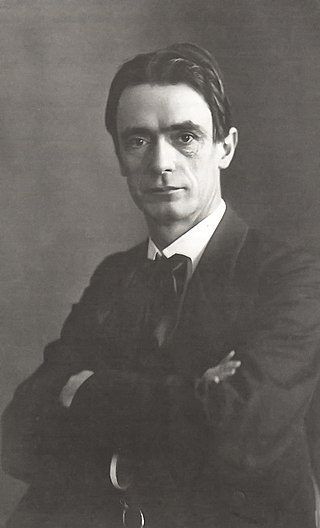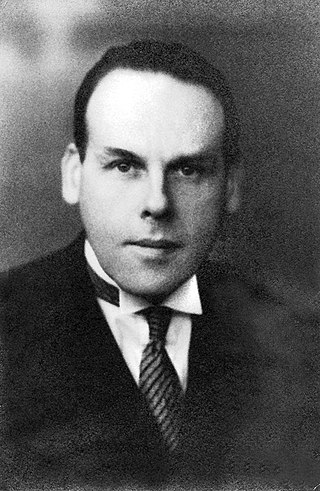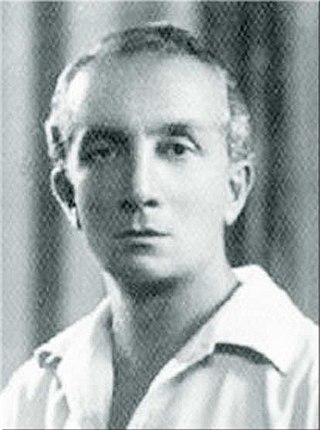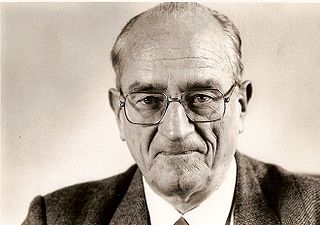Anthroposophy is a spiritual new religious movement which was founded in the early 20th century by the esotericist Rudolf Steiner that postulates the existence of an objective, intellectually comprehensible spiritual world, accessible to human experience. Followers of anthroposophy aim to engage in spiritual discovery through a mode of thought independent of sensory experience. Though proponents claim to present their ideas in a manner that is verifiable by rational discourse and say that they seek precision and clarity comparable to that obtained by scientists investigating the physical world, many of these ideas have been termed pseudoscientific by experts in epistemology and debunkers of pseudoscience.

Chakras are various focal points used in a variety of ancient meditation practices, collectively denominated as Tantra, part of the inner traditions of Hinduism and Buddhism.

Rudolf Joseph Lorenz Steiner was an Austrian occultist, social reformer, architect, esotericist, and claimed clairvoyant. Steiner gained initial recognition at the end of the nineteenth century as a literary critic and published works including The Philosophy of Freedom. At the beginning of the twentieth century he founded an esoteric spiritual movement, anthroposophy, with roots in German idealist philosophy and theosophy. His teachings are influenced by Christian Gnosticism. Many of his ideas are pseudoscientific. He was also prone to pseudohistory.
The following outline is provided as an overview of and topical guide to spirituality:
The General Anthroposophical Society is an "association of people whose will it is to nurture the life of the soul, both in the individual and in human society, on the basis of a true knowledge of the spiritual world." As an organization, it is dedicated to supporting the community of those interested in the inner path of schooling known as anthroposophy, developed by Rudolf Steiner.

The Six Dharmas of Nāropa are a set of advanced Tibetan Buddhist tantric practices compiled by the Indian mahasiddhas Tilopa and Nāropa and passed on to the Tibetan translator-yogi Marpa Lotsawa.

Walter Johannes Stein was an Austrian philosopher, Waldorf school teacher, Grail researcher, and one of the pioneers of anthroposophy.

Esoteric Christianity is a mystical approach to Christianity which features "secret traditions" that require an initiation to learn or understand. The term esoteric was coined in the 17th century and derives from the Greek ἐσωτερικός.
A spiritual practice or spiritual discipline is the regular or full-time performance of actions and activities undertaken for the purpose of inducing spiritual experiences and cultivating spiritual development. A common metaphor used in the spiritual traditions of the world's great religions is that of walking a path. Therefore, a spiritual practice moves a person along a path towards a goal. The goal is variously referred to as salvation, liberation or union. A person who walks such a path is sometimes referred to as a wayfarer or a pilgrim.

The Philosophy of Freedom is the fundamental philosophical work of philosopher, Goethe scholar, and esotericist Rudolf Steiner (1861–1925). It addresses the question of whether and in what sense human beings are free. Originally published in 1894 in German as Die Philosophie der Freiheit, with a second edition published in 1918, the work has appeared under a number of English titles, including The Philosophy of Spiritual Activity, The Philosophy of Freedom, and Intuitive Thinking as a Spiritual Path.
Sergei Olegovich Prokofieff was a Russian anthroposophist. He was the grandson of the composer Sergei Prokofiev and his first wife Lina Prokofiev, and the son of Oleg Prokofiev and his first wife Sofia Korovina. Born in Moscow, he studied fine arts and painting at the Moscow School of Art. He encountered anthroposophy in his youth, and soon made the decision to devote his life to it.
Georg Kühlewind, birth name György Székely was a Hungarian philosopher, writer, lecturer and meditation teacher, who worked from the tradition of Rudolf Steiner’s spiritual science. Setting aside his early interest in music and psychology, he pursued a successful professional career as a physical chemist. Meanwhile, he continued to deepen his spiritual practice and insights. A prolific author, Kühlewind spent much time traveling the world, lecturing and leading workshops and seminars in meditation, psychology, epistemology, child development, anthroposophy, and esoteric Christianity. He was the author of numerous books.

Jewish meditation includes practices of settling the mind, introspection, visualization, emotional insight, contemplation of divine names, or concentration on philosophical, ethical or mystical ideas. Meditation may accompany unstructured, personal Jewish prayer, may be part of structured Jewish services, or may be separate from prayer practices. Jewish mystics have viewed meditation as leading to devekut. Hebrew terms for meditation include hitbodedut or hitbonenut/hisbonenus ("contemplation").
Active imagination refers to a process or technique of engaging with the ideas or imaginings of one's mind. It is used as a mental strategy to communicate with the subconscious mind. In Jungian psychology, it is a method for bridging the conscious and unconscious minds. Instead of being linked to the Jungian process, the word "active imagination" in modern psychology is most frequently used to describe a propensity to have a very creative and present imagination. It is thought to be a crucial aid in the process of individuation.

Jain meditation has been the central practice of spirituality in Jainism along with the Three Jewels. Jainism holds that emancipation can only be achieved through meditation or shukla dhyana. According to Sagarmal Jain, it aims to reach and remain in a state of "pure-self awareness or knowership." Meditation is also seen as realizing the self, taking the soul to complete freedom, beyond any craving, aversion and/or attachment. The 20th century saw the development and spread of new modernist forms of Jain Dhyana, mainly by monks and laypersons of Śvētāmbara Jainism.
Body of resurrection is a typical term of Esoteric Christianity, used to indicate a spiritual body associated with a special enlightenment or experience. Many western and Eastern traditions share a common doctrine on a spiritual and immortal body which represent the ultimate goal of many ascetical works.

Massimo Scaligero was an Italian spiritual teacher and member of the UR Group, which gathered occultists and mystics. A mentee of Julius Evola, Scaligero espoused fierce antisemitic views which were combined with esotericism and anthroposophy into a system of "integral racism" with the aim to bring Germany and Italy closer together in the same way it would the spiritual and the biological.

Jörgen Smit was a Norwegian teacher, teachers teacher, speaker and writer, mainly in the context of the Anthroposophical Society and the Waldorfschool Movement. He was the general secretary of the Norwegian Anthroposophical Society, co-founder of the Rudolf Steiner Seminar in Järna, Sweden and member of the Executive Council of the General Anthroposophical Society at the Goetheanum in Dornach, Switzerland.
Peter Selg is a German psychiatrist. He was born in Stuttgart and studied medicine in Witten-Herdecke, Zurich, and Berlin. Until 2000, he worked as the head physician of the juvenile psychiatry department of Herdecke hospital in Germany. Selg is director of the Ita Wegman Institute for Basic Research into Anthroposophy and professor of medicine at the Alanus University of Arts and Social Sciences (Germany). He lectures extensively and is the author of numerous books.
Goetheanism is a term commonly used in the context of anthroposophy and Waldorf education for a holistic oriented science methodology. The scientific works of Johann Wolfgang von Goethe are regarded as the paradigmatic foundation of this methodology. It was theoretically founded by Rudolf Steiner as editor and commentator of Goethe's scientific writings (1883-1897) and as author of an "Epistemology of Goethe's Worldview" (1886). Goetheanist research strives to combine empirical Methodology and holistic understanding of essence, with the aim to overcome the epistemological split between subject and object.









